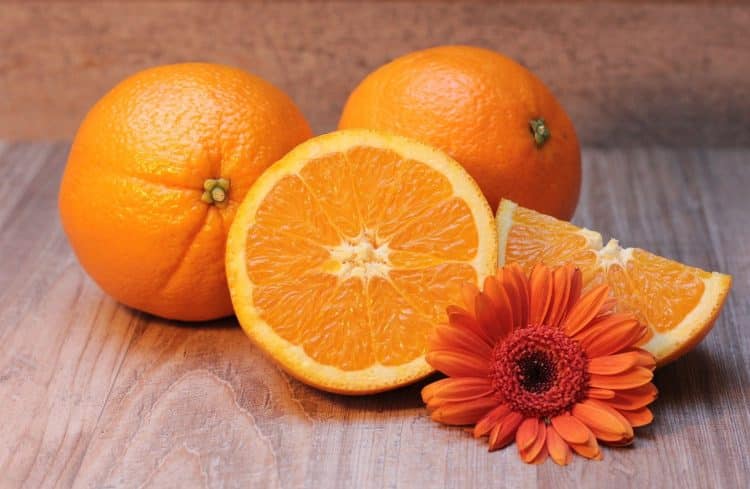Bio-based solvents come from biomass, such as ethanol from corn biomass, and may serve as renewable alternatives to non-renewable fossil fuel-based solvents (e.g., hydrocarbon solvents). [1] Bio-based solvents are not necessarily environmentally friendly; land and energy requirements must be considered alongside toxicity and other concerns. [1] A recent study published in Biochemical Engineering Journal examined an array of bio-based solvents and reported on their efficacy in extracting valuable components—the monoterpene limonene, in particular—from orange peel waste. [2]
One third of food intended for consumption ends up in the trash. This puts global food waste at 1.6 gigatons (Gt) per year [2], where a gigaton is equal to one billion tons, or roughly 2.2 trillion pounds. The juicing industry plays a significant role since much of a fruit’s net weight is discarded. Nonetheless, the authors explain that “orange peel waste (OPW) is a chemically complex and highly biodegradable residue that contains a wide array of valuable compounds, including fermentable sugars, carbohydrate polymers, flavonoids, polyphenols, and essential oils.” In this case, the researchers extracted and quantified limonene from OPW. Limonene is a valuable therapeutic agent in addition to boasting numerous agricultural and industrial uses.
The study authors used hexane as a reference standard and examined the following solvents, selected after analysis of safety and physico-chemistry:
- Cyclopentyl methyl ether (CPME)
- Ethyl lactate (EL)
- Isopropyl alcohol (IPA)
- Polyethylene glycol 300 (PEG 300)
- Isopropyl acetate (IAc)
- Dimethyl carbonate (DMC)
- Methyl ethyl ketone (MEK)
- 2-Methyl-tetrahydrofuran (2-MeTHF)
- Ethyl acetate (EAc)
CPME and 2-MeTHF were predicted as the most probable to extract limonene based on solubility. Performing solid-liquid (1:10) extraction at 30°C for 120 minutes, or “benchmark conditions,” the researchers confirmed CPME and 2-MeTHF as the best bio-based solvents. Compared to hexane, CPME boosted limonene yield by 80%. In fact, hexane was number five in terms of performance, after PEG 300 and IAc. Using a scanning electron microscope (SEM), they observed that the superior solvents had a “greater ability to break the complex linkages” in the biomass and thereby affect cell walls.
The authors also played with time and temperature variables. The most significant increase in limonene yield occurred between 30 and 150 minutes, making the latter the best option. Increasing the temperature to 70°C enhanced the efficiency of the extraction, but by 90°C, limonene degradation and loss became evident. Recycling the bio-based solvents was also possible, generating “4-fold [CPME] and 2-fold [2-MeTHF] limonene extraction yields in comparison to that provided by hexane after three consecutive extraction cycles.” Scalability and costs between solvents were not compared, however.
This research aims to support “sustainable bio-refineries for citrus waste valorisation.” [2] This means using renewable solvents with relatively “green” properties to convert food waste into valuable chemicals—or, if you will, trash into treasure.
References
- Vovers J, Smith KH, Stevens GW. “Chapter 4: Bio-Based Molecular Solvents.” The Application of Green Solvents in Separation Processes, eds. Pena-Pereira F and Marek Tobiszewski, 2017, pp.91–110, doi:10.1016/b978-0-12-805297-6.00004-8. Times Cited: 16 [book]
- Ozturk B, Winterburn J, Gonzalez-Miquel M. “Orange Peel Waste Valorisation Through Limonene Extraction Using Bio-Based Solvents.” Biochemical Engineering Journal, vol.151, no.107298, 2019. Impact Factor: 3.475; Times Cited: 5
Image by S. Hermann & F. Richter from Pixabay











